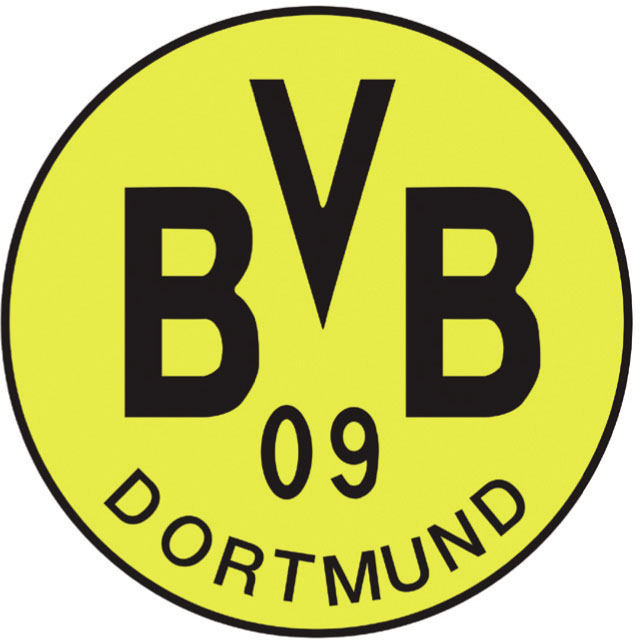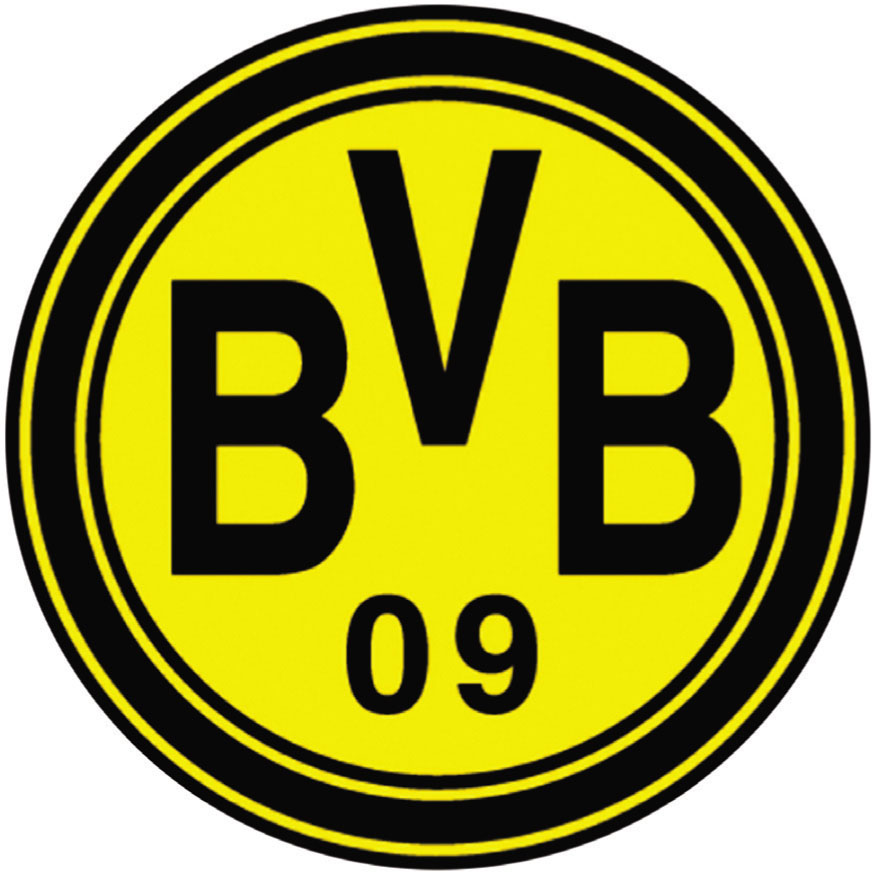
BORUSSIA DORTMUND
THE YELLOW WALL OF THE RUHR
Attacking football and low ticket prices create one of the highest average attendances in Europe – this is a popular team. Jürgen Klopp’s arrival at Borussia Dortmund in the summer of 2008 heralded an upswing for the great German club. A Champions League final in 2013 and two Bundesliga titles under the charismatic Klopp made the world pay attention once more to Dortmund, a club that had been in the doldrums for a while.
Dortmund’s earlier golden era reached its peak with victory in the 1997 Champions League sinal, with a lob from Lars Ricken over the head of the Juventus goalkeeper Angelo Peruzzi. This glorious period was followed by economic crisis, and despite winning the Bundesliga shield of 2002 the club suffered financial hardships. They were eventually saved by, among other measures, a loan from their rivals Bayern Munich. To survive in the long term, Dortmund needed to rethink and they now started to take a chance on homegrown talents. This policy led to the production of talented players such as Mario Götze, Marcel Schmelzer and Nuri Sahin, which led to Champions League success in 2013.
The club’s simple yellow-and-black roundel badge carries the year the club was founded and the legend BVB – by which the team are commonly known in Germany). BVB stands for Ballspielverein Borussia (literally ‘Ball games club Borussia’), although some fans insist it stands for Borussen vom Borsigplatz, or ‘Borussia fans from Borsigplatz’, after the city square where the club’s founders drank the local Borussia beer at the restaurant Zum Wildschütz.
CLUB: Ballspielverein Borussia 09 Dortmund
NICKNAMES: Die Borussen, Die Schwarzgelben (the Black and Yellows) & Der BVB
FOUNDED: 1909
STADIUM: Westfalenstadion (Signal Iduna Park), (81,359 capacity)
HISTORIC PLAYERS: Michael Zorc, Karl-Heinz Riedle, Matthias Sammer, Mario Götze and Marco Reus

1945–1964. On 19 December, 1909, Ballspielverein Borussia was founded by a group of young men who were dissatisfied with the management of the church team for which they all played. Although Borussia means ‘Prussia’ in Latin, the name was in fact taken from a nearby brewery. The club’s first emblem was not adopted until after the end of the Second World War.

1964–1974. After the league title in 1973, the club’s badge was changed and the background rendered in black, a colour that suggested power, authority and strength. Whether the new design succeeded in frightening the opposition is debatable: the team won only one title in this period.

1976–1978. In the wake of Eintracht Braunschweig’s successful Jägermeister coup, which meant that the German rules for sponsorship agreements on the strip were relaxed, Dortmund decided to experiment with their badge. The club entered into an agreement with the tobacco company Samson which meant not only that the brand name would appear on the shirts but also that the emblem would change to the company logo. This was not a very popular deal with the fans. The fact that the team registered its greatest ever loss – 12-0 against Borussia Mönchengladbach – hardly helped.

1974–1976 and 1978–1993. Two years after the lion’s appearance, Dortmund reverted to using gold as the background colour in their emblem – a change that was implemented to the joy of their fans after the agreement with Sansom had run its course. This crest was the first in the club’s history not to include the name Dortmund.

1993–present. Today’s emblem is near enough the same as the one from 1945, and differs only in the colour and in leaving out the name of the town. A simple badge with the club’s initials and the year it was founded – it doesn’t have to be any more complicated than that.

Dortmund’s Klaus Ackermann wearing the unpopular Samson tobacco-influenced club crest in 1976.